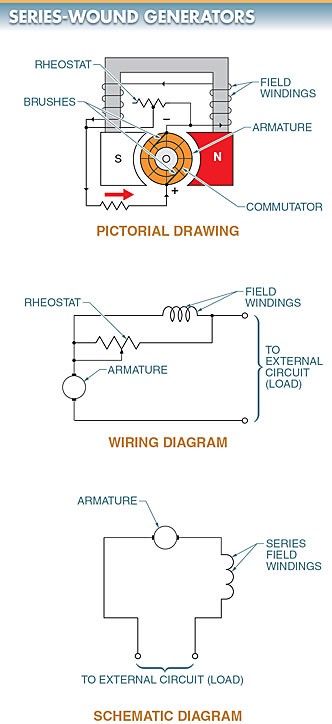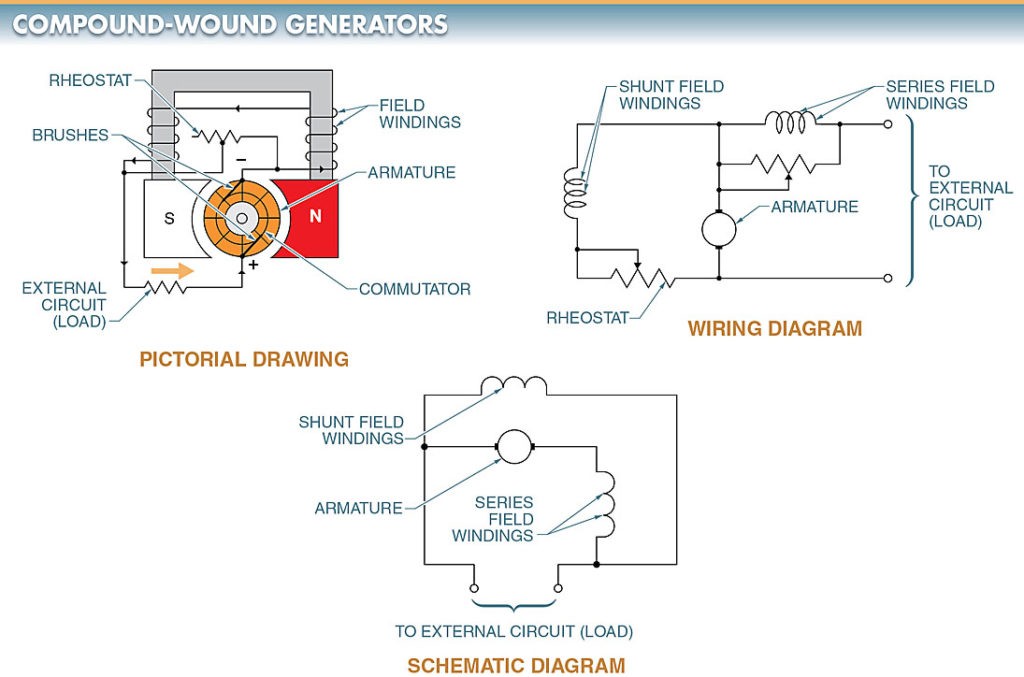The three types of DC generators are series-wound, shunt-wound, and compound-wound generators. The difference between the types is based on the relationship of the field windings to the external circuit.
Series-Wound DC Generators
A series-wound DC generator is a generator that has its field windings connected in series with the armature and the external circuit (load). See Figure 1.
In a series-wound generator, the field windings consist of a few turns of low-resistance wire because the load current flows through them.
Figure 1. A series-wound DC generator; (b) Wiring Diagram, (c) Schematic Diagram
The ability of a generator to have a constant voltage output under varying load conditions is referred to as the generator voltage regulation. Series-wound generators have poor voltage regulation. Because of their poor voltage regulation, series-wound DC generators are not used frequently.
The output voltage of a series-wound generator may be controlled by a rheostat (variable resistor) connected in parallel with the field windings.
Shunt-Wound DC Generators
A shunt-wound DC generator is a generator that has its field windings connected in parallel (shunt) with the armature and the external circuit (load). See Figure 2.
Because the field windings are connected in parallel with the load, the current through them is wasted as far as output is concerned. The field windings consist of many turns of high- resistance wire to keep the current flow through them low.
Figure 2. A shunt-wound DC generator; (b) Wiring Diagram, (c) Schematic Diagram
A shunt-wound generator is suitable if the load is constant. However, if the load fluctuates, the voltage also varies. The output voltage of a shunt-wound generator may be controlled by means of a rheostat connected in series with the shunt field.
Compound-Wound DC Generators
A compound-wound DC generator is a generator that includes series and shunt field windings. In a compound-wound generator, the series field windings and shunt field windings are combined in a manner to take advantage of the characteristics of each.
The shunt field is normally the stronger of the two. The series field is used only to compensate for effects that tend to decrease the output voltage. See Figure 3.
Figure 3. A compound-wound DC generator; (b) Wiring Diagram, (c) Schematic Diagram




